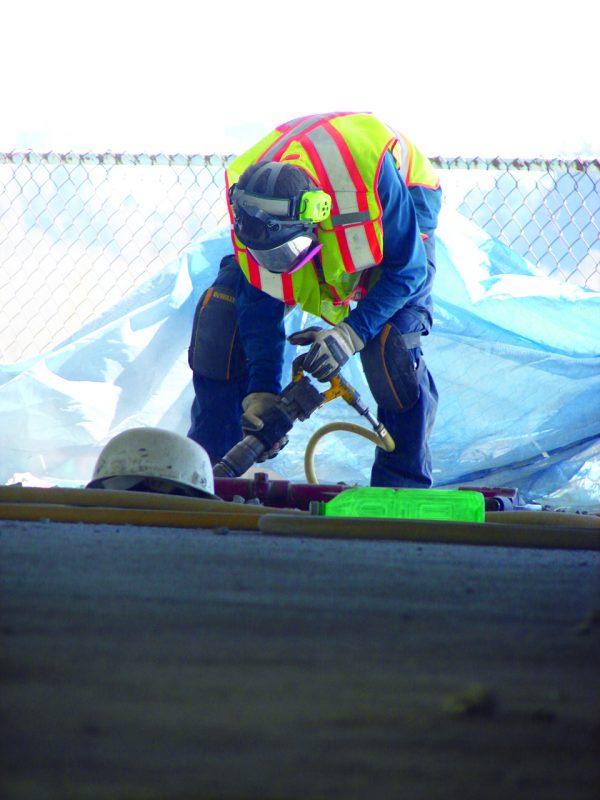New research shows personal protective equipment (PPE) is not the most cost-effective way to protect workers from silica risk.
The work was led by economist Emile Tompa of the Institute for Work & Health in Toronto, but the team also included researchers from the Occupational Cancer Research Centre, University of British Columbia (UBC) and Ryerson University. Funding came from the Ontario Ministry of Labour Research Opportunities Program.
The research estimated cancers averted and intervention costs of two silica control measures. The team concluded that PPE is not the most cost-effective method of protecting workers from silica exposure and challenged the common practice of providing PPE to workers exposed to hazardous materials.
“From an industry perspective this doesn’t affect us much,” explained Dave Baspaly, president of the Council of Construction Associations (COCA).
“In B.C., of course we have one of the highest standards in silica safety which goes far beyond OSHA. The BCCSA (BC Construction Safety Association) has been able to create an online resource that explains mitigation and control methods and that is working very well in our jurisdiction.”

COCA represents the interests of the construction industry in its dealings with the WorkSafeBC.
UBC Professor Hugh Davies, who was involved in the research, was also part of the team that developed the BCCSA’s silica tool. Rather than have testing done at every jobsite for every construction activity, the tool uses a database of existing data that meets WorkSafeBC requirements.
Users can then access the silica tool site where they enter in variables like the activity, tools being used, duration and more to access relevant data. A mitigation plan is generated, allowing the workers to meet regulations.
The research team focused on analysing the benefits of two common control measures. The first is wet methods that involve spraying down work surfaces to minimize dust and PPE. The second is half face respirators. They further set out to determine when the benefits equaled or exceeded the intervention costs or break-even point when it comes to cancers.
According to the research, costs for PPE were approximately $400/person compared to $200/person for wet method.
Researchers considered costs (direct health care, productivity and health-related quality of life) at a societal level. They also estimated the number of future workers exposed to silica dust spanning 30 years and the future silica-related lung cancers under current practices. They then calculated the numbers of cancers prevented with each of the two methods, monetized the benefits and determined a break-even point.
Researchers noted their cost estimates leaned towards more conservative because the research did not account for other diseases that might also be prevented by these control methods, nor did it consider other controls such as local ventilation, nor the effectiveness of a combination of controls.
“While we wouldn’t disagree with these conclusions, there are more controls than the two they have offered here, and this jurisdiction has already taken more steps to mitigate impacts of silica,” added Baspaly.
Workers are commonly exposed when products containing silica are disturbed by grinding, cutting, drilling or chipping which creates respirable silica dust. Crystalline silica dust is classified as a human carcinogen by the International Agency for Research on Cancer. Silica also causes silicosis and is linked to chronic obstructive pulmonary disorder, rheumatoid arthritis and pulmonary tuberculosis.
The 2017 Burden of Occupational Cancer in Ontario report estimates 142,000 Ontario workers are exposed to crystalline silica, causing almost 200 lung cancer cases every year, half of which are in the construction sector.
According to the BCCSA, more than 380,000 workers, mostly construction workers, are exposed to the dust each year. Acute silicosis can occur just weeks or months after a high exposure and can be fatal. Other delayed health effects can appear years later, like lung cancer or chronic silicosis. According to workers’ compensation data over the last 15 years, only a small number of those experiencing silicosis symptoms sought a claim.











Recent Comments